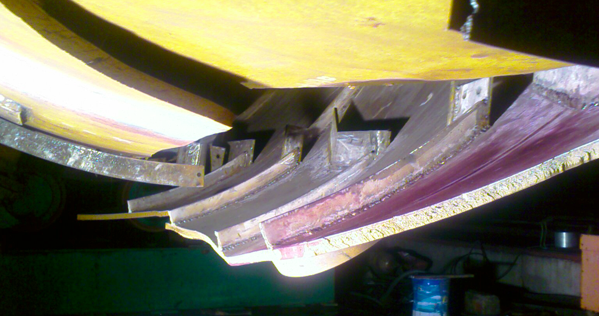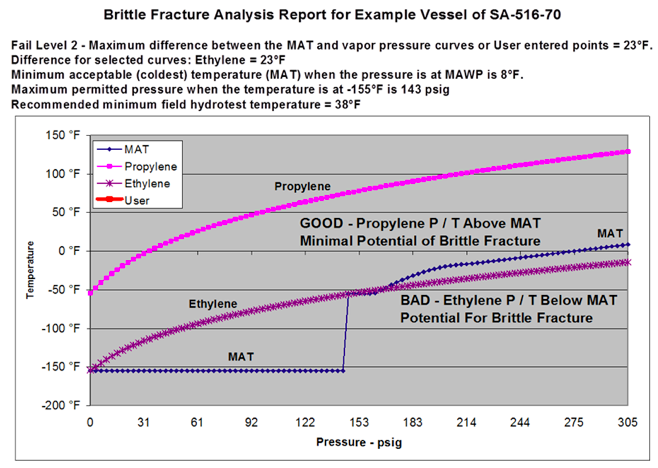The olefin and hydrocarbon processing industries have experienced a number of brittle fracture failures caused by exposure to low temperatures due to auto-refrigeration. Auto-refrigeration is a process where an unintentional and/or uncontrolled phase change of a hydrocarbon from a liquid state to a vapor occurs, resulting in a very rapid chilling (refrigeration) of the liquid containing local equipment and/or piping. This phenomenon can result in a catastrophic ‘break-before-leak’ scenario commonly referred to as brittle fracture. Some common process units where auto-refrigeration has occurred include olefin plants, gas processing, refineries, polymer units, and ammonia units. When auto-refrigeration has the potential to occur, it is important to evaluate the process unit’s material of construction for all vessels and piping systems to ensure their fitness-for-service under the auto-refrigeration excursion and any subsequent control system or operator actions.
Brittle fracture occurs when a vessel or piping is chilled due to auto-refrigeration and the excursion or post excursion stresses are sufficient to drive fracture at existing flaws. This behavior is often described by the brittle fracture triangle where closure of the triangle indicates the potential for brittle fracture (see Figure 1).

Auto-refrigeration is a unique fitness-for-service challenge in that potential scenarios must be proactively identified and mitigated. By their very nature, these transient events occur under uncontrolled, abnormal operating states (upset, inventory-startup, shutdown, etc.). There are practical approaches available to use process hazards analysis (PHAs) and API 579 / ASME FFS-1 methodologies to assess existing vessels and piping for potential auto-refrigeration induced brittle fracture. One approach to execute the analyses is outlined in Figure 2. It is important to note that Operations training on auto-refrigeration avoidance is a critical component to an effective brittle fracture prevention program. Owner/Operators of processing units that potentially could have auto-refrigeration induced brittle fracture should provide Operations training that indicates actions required to prevent auto-refrigeration and actions to perform and avoid in case auto-refrigeration does occur.


There are unique process hazard evaluation methods that can be used to identify and evaluate potential auto-refrigeration and brittle fracture scenarios. As a part of the review, equipment and piping are analyzed using methods outlined in Part 3 of API-579 / ASME FFS-1 to develop a minimum allowable temperature (MAT) curve (Level 2a). The MAT curve defines the lowest temperature allowed at a specific pressure to ensure the vessel / piping material remains ductile. Once the MAT curve is defined, process hazard scenarios are developed using dynamic and sequence driven methodologies to compare to the equipment MAT curve.

USA OSHA’s National Emphasis Program (NEP) requires utilizing API 579/ASME FFS-1 as a basis for establishing and documenting fitness-for-service and minimum allowable temperature (MAT) on vessels and piping. Many facilities have implemented development of the equipment MAT’s as a part of their ongoing fitness-for-service and inspection programs. However, many facilities have not fully utilized this information during PHA’s to evaluate the dynamic and transient auto-refrigeration conditions that can result in potential brittle fracture. To all inspectors or reliability/maintenance professionals: how has your facility utilized the API 579/ASME FFS-1 MAT information to establish operating/maintenance limits and/or mitigation as a part of your facility PHA work process? You should all be aware that there are methods and evaluation techniques available that can assist you in preventing this potential fitness-for-service process hazard.
















Comments and Discussion
There are no comments yet.
Add a Comment
Please log in or register to participate in comments and discussions.